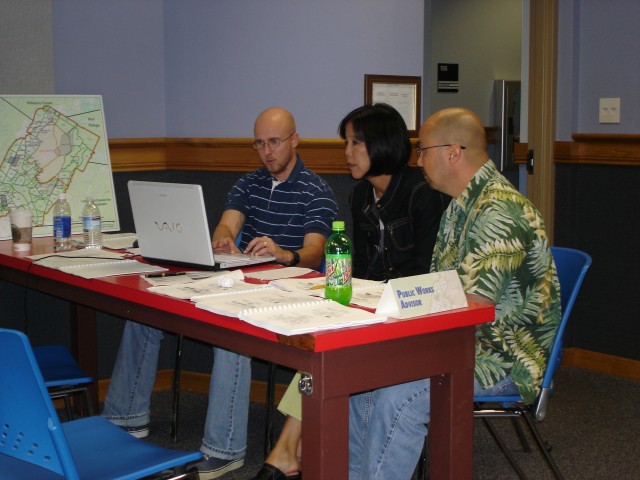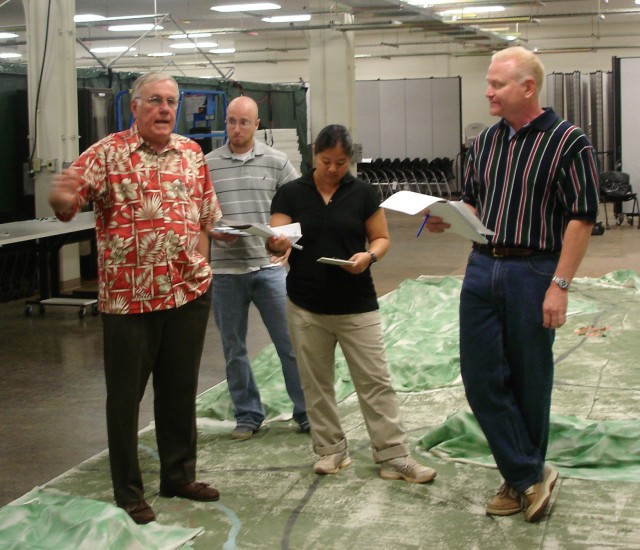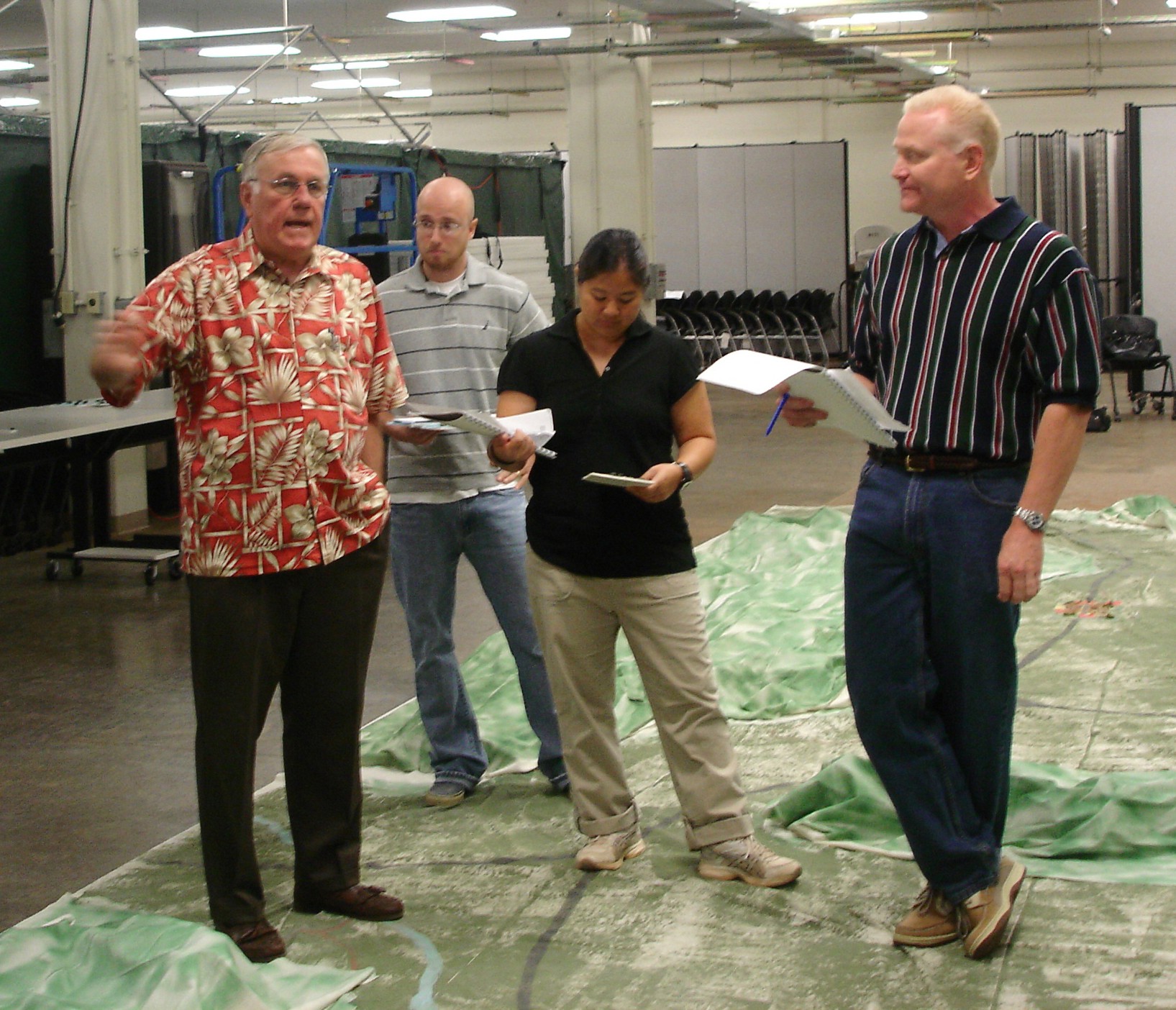SCHOFIELD BARRACKS, Hawaii - More than 20 civilians and contractors who work for U.S. Army-Hawaii gathered in the Installation Training Center, here, for a weeklong introduction to the Army and the environment, March 29-April 2.
The course, Army 101, stems from a Congress-mandated requirement to train and mentor incoming environmental personnel, and is taught four times a year at Army Environmental Command's headquarters or at any installation that requests the training.
"This program was set up to mentor and teach (environmental employees) what the Army is all about," said Ted Reid, course director, AEC.
"Understanding the environmental impacts installations deal with is crucial because it affects our ability to train," he said during the course.
Rhonda Suzuki, chief, Environmental Compliance/Pollution Prevention/Restoration Branch, Environmental Division, Directorate of Public Works, U.S. Army Garrison-Hawaii, requested the training because she felt new environmental employees and interns would benefit from a better understanding of how the Army works.
"I knew the training was available to interns (in the continental U.S.), but I couldn't afford to send all of our interns or new employees there," Suzuki said.
"The course is a great way to learn (more about the Army) and how we all work together to support Soldiers and the mission," Suzuki explained in the class.
Similar to the Army Management Staff College's Foundations Course, which is offered to new employees as an introduction to the Army, Army 101 inducts new employees with an emphasis on the Army's environmental mission.
The Army's environmental program oversees compliance with all applicable international, federal and state laws to sustain the environment for the future.
"One of the beauties of teaching this program is that while not all of these (employees) stay working for the Army, by giving them this overview, you at least then have someone out there who knows what the Army is about," Reid said.
"We have so many special interest groups who don't always know what the Army is doing or why we need to do the things we do. Current and former employees are able to explain the big picture," Reid added.
Students who attended included Department of the Army interns; Department of the Army civilians from the Corps of Engineers-Honolulu District, the Installation Management Command-Pacific and U.S. Army Garrison-Hawaii; and contractors from Army Hawaii Family Housing and the garrison's DPW and Office of the Native Hawaiian Liaison.
The class opened with an overview of the Army's structure and organization, tactical units and equipment, and the unique customs of Soldiers.
A practical exercise simulating the "fog of war" required students to role play as Soldiers taking part in a rescue mission downrange, which demonstrated how important realistic training is for Soldiers.
The weeklong course ended with environmental-specific training and a final practical exercise involving a fictitious garrison, tenant organizations and local community stakeholders working together to accommodate the addition of a mechanized brigade to the garrison.
Not only did the garrison have to figure out if it could logistically fit an entire unit on the installation, it had to take into account support services such as hospitals, housing and schools.
The garrison also had to determine whether a local community can support an increase in people and traffic during the exercise.
Many installations also have areas of cultural significance or restrictions in place for endangered animal or plant species that must be protected.
"I wanted the staff to understand where they fit into the big picture and how the other pieces fit into the puzzle," Suzuki said.
Knowing how installation staff offices work together is one of the main points of the Army 101 training.
"It's not easy on an installation," Reid explained. "You have to coordinate.
"What one office does impacts what every other office does, so you have to work together," Reid said.
At the end of the day, no matter what the issue, the pieces of the puzzle on an installation come together to find sustainable solutions that allow the Army to do what it does best: train Soldiers.
"You have to support the mission," Reid said. "Everything we do on any installation has to support the mission. From environmentalists to cultural resources, we have to support the mission."
For more information on Army Environmental Command, visit <a href="http://www.aec.army.mil">www.aec.army.mil</a>.




Social Sharing